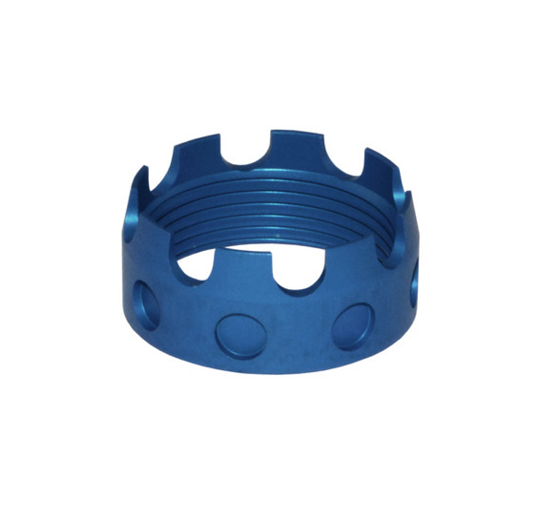The buffer tube is a part of the lower receiver of a rifle and serves two functions: it serves as the attachment point for the buttstock and it houses the recoil buffer mechanism.
The Essential Parts of A Buffer Tube:
- Buffer Tube: It is designed to house the buffer and buffer spring. The front end of this tube is threaded, which allows it to screw easily into the lower receiver.
- Buffer: It is a cylindrical shaft that moves within the buffer tube.
- Buffer spring: It enables the buffer to ride back through the buffer tube. It helps to distribute the impact of recoil over a fixed period of time.
- Receiver lock plate: It is also known as an end plate and is basically a hyped washer.
- Castle nut: This nut tightens the buffer tube onto the receiver. It earned its name because it resembles a rook or castle turret in the game of chess.
Commercial Vs. Military Spec Buffer Tubes
If
you want to build your own weapon or just upgrade the stock buffer tube on it,
then you must be aware of the mil-spec as commercial buffer tubes. These two types
follow different standards and provide different results.

Mil-Spec
Buffer Tubes
Mil-Spec
are standards put in place by the General Accountability Office (GAO) for defining
standardized measurements and requirements of weapons employed by the military.
These standards have been established to ensure excellent reliability, commonality, and interoperability for each
part bought for military use.
Military Specifications buffer tubes meet the requirements of the GAO. They showcase a forged, one-piece design and their threads are rolled. They measure 1.145 to 1.150-inch in diameter.
The
following brands use the mil-spec buffer tubes – HK, LWRC International, LMT,
Colt, Armalite, and Smith & Wesson, and more.
Commercial
Buffer Tubes
For
the commercial buffer tubes, the manufacturers start with a tube that fits the
final tube diameter. The threads are “cut” into the front end with a machine
tool just like other threaded pipes. The end cap on commercial buffer tubes is generally
welded on, meaning they are constructed from two pieces of material. These
buffer tubes are 1.163 to 1.173-inch in diameter, making them slightly larger
than the Mil-Spec buffer tubes. Therefore, their surface is a bit thicker than the
mil-spec buffer tubes. The back of a Mil-Spec will is more likely to be flat
whereas commercial buffer tubes will be slanted.
The following brands use commercial buffer tubes – YHM, Rock River Arms, Bushmaster, DPMS, and more.
Interesting
Fact:
The
Military Spec buffer tubes were the original design. The commercial buffer
tubes came into the picture due to their economical manufacturing process.
Final
Note:
Buffers
and buffer tubes are essential components of the weapon’s operation and have a
huge impact on cycling, stability, and recoil. To take the next step and
upgrade your gun dramatically, explore our website. We offer the finest quality
products like grips, Glock, lasers, MCK accessories, shotguns, AR-10, AR-15 that will surely enhance your shooting
experience.

